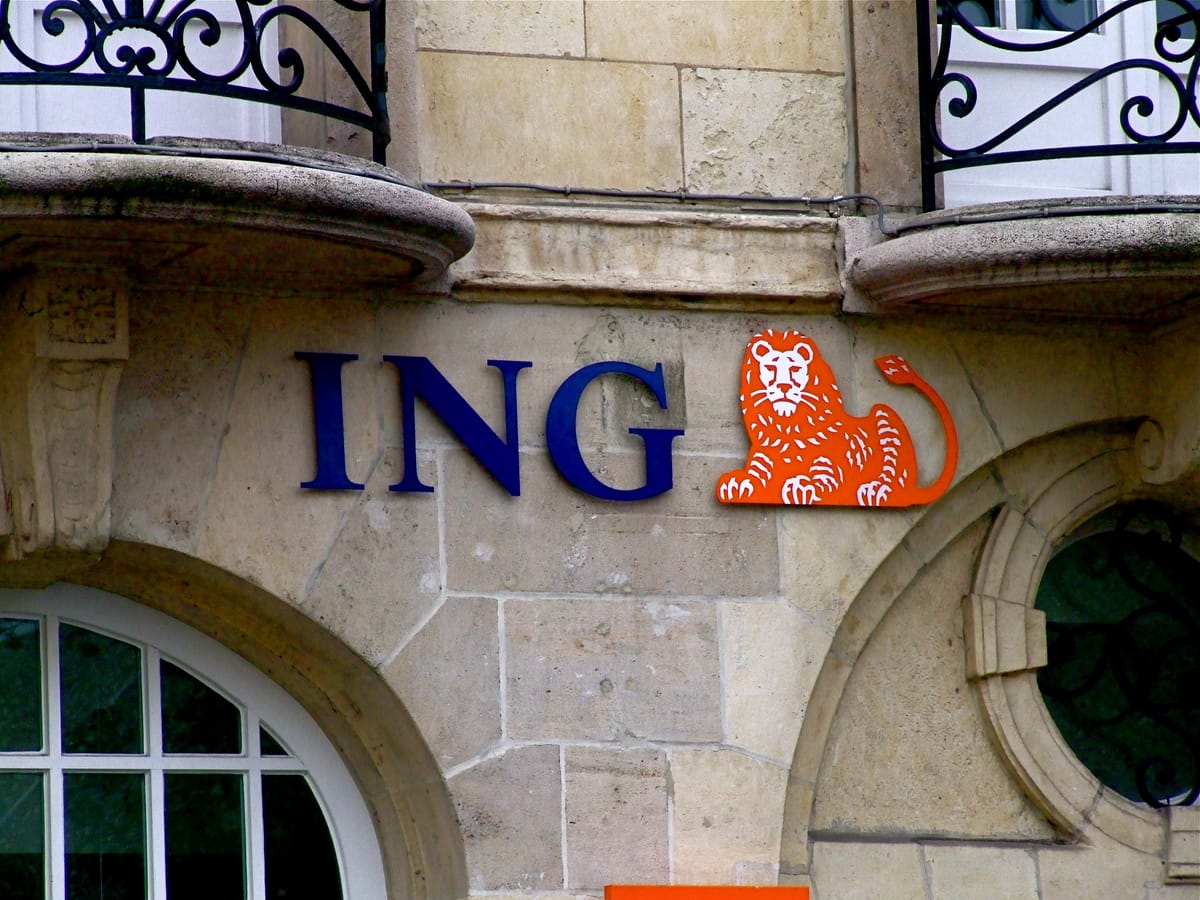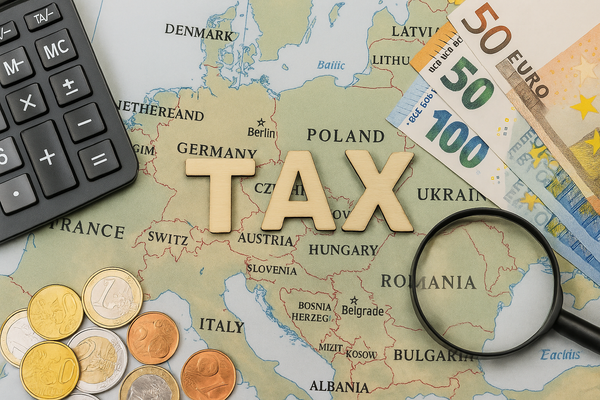
Moment of truth for Orban - ING's report on Poland, Czechia, Romania, Hungary
Central and Eastern Europe (CEE) is becoming increasingly diversified, ING Bank writes in a new report on Poland, Czechia, Romania and Hungary. This diversification includes economic outlooks, inflation profiles and reaction functions of central banks, the Dutch bank added in its report entitled “One region but very different stories for CEE countries”.

Critical juncture for Hungary’s economy
Hungary finds itself at a critical crossroads, marked by ongoing discussions concerning EU funds, ING wrote in an analysis entitled “Hungary: The moment of truth approaches”.
The government led by Hungarian Prime Minister Viktor Orban has provided responses to the European Commission’s 9 questions, and the 90-day review period is rapidly approaching its conclusion, leaving less than 10 days until a decision is expected.
A EUR 13bn portion of the Cohesion Fund hangs in the balance. Another defining moment in the upcoming weeks will be the release of third-quarter GDP figures, ING wrote.
The forecast suggests the end of a technical recession for Hungary, largely attributed to improvements in the agriculture and industry sectors. Despite this positive development, the full-year prediction maintains a 0.5% reduction in real GDP compared to 2022.
Consumption is one of the most pressing challenges for the Hungarian economy and its budget. Despite expectations of real wage growth turning positive by September, the impact on consumption may be limited.
Hungarian consumer confidence lowest in a decade
In the last two years, rampant inflation has eroded household purchasing power, resulting in consumer confidence hovering at a ten-year low. However, relief is expected in 2024 as disinflation and positive real wage growth converge. September’s inflation reading exceeded expectations, prompting a downward revision of short-term inflation estimates, ING wrote.
It is anticipated that Hungary’s average annual inflation rate will be 17.8%, with a year-end reading of 7% year-on-year. Nevertheless, the outlook for 2024 remains stable at 5.1% due to increasing global and domestic inflationary risks.
Improved inflation dynamics and the Hungarian forint’s resilience have given the Hungarian central bank the impetus to execute a 75-basis-point rate cut in September. As a result, the bank is expected to maintain this momentum, with the year-end base rate forecast at 10.75%.
The pace of rate cuts is expected to decelerate in the first quarter of the following year as disinflation moderates, and the ex-post real interest rate anchors monetary policy.
Consequently, a strengthening of the forint is expected, contingent on developments related to the EU deal. The projection suggests an exchange rate of HUF 375 to the euro by year-end and HUF 365 forints to the euro by mid-2024, supported by the region’s most favourable positive real rate and carry trade dynamics.
Poland to gradually unlock investment potential
Poland’s recent general elections – where a centrist Civic Coalition (KO) led by erstwhile prime minister Donald Tusk last month toppled the right-wing Law and Justice Party (PiS) after eight years in power – represented a major political shift for the country.
Tusk’s opposition secured a majority against the odds, paving the way for a government intent on better managing the EU’s Recovery and Resilience Facility funds and restoring the rule of law, ING wrote.
Poland stands to receive a substantial injection of EUR 8bn in grants by 2024, which could help stimulate economic growth and finance the country’s high borrowing levels. An additional PLN 30-35bn (EUR 67.37-78.6mn) has been allocated for the 2024 budget to keep pre-election promises.
The Dutch bank predicts a shift towards expansionary fiscal policy in the years ahead, which may not significantly impact government bond yields, as foreign investors are already returning to the Polish market. “After lagging behind its CEE peers, EU funding and increased foreign direct investment (FDI) confidence should enable the country to begin to catch up,” ING wrote.
The third quarter of 2023 marked a turning point in the Polish economy, recent data shows. With GDP growth estimated at 0.5-0.7% year-on-year, it is anticipated that full-year growth will come in at around 0.4%, driven by the recovery of consumer spending and the resurgence of EU-backed construction projects.
Poland’s inflation has shown signs of moderation and headline CPI figures have eased, which could allow for another 25-basis-point rate cut by the central bank. However, due to a fluctuating zloty and lingering fiscal risks, monetary easing in 2024 may be less aggressive.
Central bank rate cut pivotal
National Bank of Poland President Adam Glapinski’s rate cut should play a key role in shaping policy after the November meeting, ING predicted. The zloty rallied after the elections, stabilising at around PLN 4.46 to the euro, as investors await news on the formation of the new government.
The Polish monetary policy committee’s stance will be key in the short term, as investors seek clarity on the central bank’s policies in a new political landscape. The long end of the yield curve has failed to rally alongside the zloty, possibly due to concerns over borrowing needs.
Nevertheless, some foreign capital inflow at the long end may lead to tighter spreads against the German curve in the short run. Long-term prospects remain uncertain due to impending fiscal stimulus. “We expect some foreign inflows at the long end, allowing for tighter spreads against the German curve in the short run. Longer-term prospects are mixed at best, as extra fiscal stimulus looms for next year,” ING concluded.
Low unemployment challenge for Czechia
Czechia is “inching closer to inflation targets” according to the title of ING’s country analysis. The Czech economy disappointment in the third quarter, extending the wait for a significant recovery. The core driver of the economy remains the automotive sector, and Czechia is benefiting from the recovery after the Covid-19 pandemic and supply chain disruptions.
Remarkably, ING comments, Czechia boasts the EU’s lowest unemployment, which, paradoxically, poses challenges for the economy. Despite this, there are promising developments regarding inflation, ING adds.
Inflation rates have fallen to 6.9% year-on-year in September, with expectations that this will represent the lowest point for the year. The most significant development here is the unexpectedly rapid decrease in household energy prices, which will moderate the inflation rate, largely due to base effects from the previous year.
As a result, growth is likely to peak just above 8% and then recede by the end of the year. Moreover, it is expected to approach the central bank’s 2% inflation target by January. The national bank has signalled its readiness to discuss rate cuts as a response to economic conditions, with expectations that a cutting cycle will commence by the end of the year.
However, the substantial drop in inflation early next year may prompt the central bank to accelerate its rate cuts. The terminal rate is projected at 3%, which aligns with the Czech central bank’s guidance and the current board’s target.
In this scenario, it is anticipated that the rate will conclude at 4% next year. The primary concern for the central bank is to maintain inflation stability near the target, which will steer the pace of rate reductions in the coming year.
Signs of stabilisation for Romanian economy
In Romania, the latest hard frequency data paints a mixed picture of the economic landscape, with some signs of stabilisation, ING wrote in an analysis entitled “Romania: Signs of bottoming in the economy.”
Growth is currently reliant on public infrastructure investments, particularly in civil engineering projects. The construction sector is experiencing a surge in activity, driven by these investments, which are bolstering GDP growth.
Additionally, a potential contribution to GDP growth is expected from net exports and the agriculture sector.
The strength of these factors may keep the economy in the green in the third quarter of the year, offsetting less robust performances in the industrial and services sectors. The forecast for 2023 indicates GDP growth of 1.5%, which may even be a conservative estimate.
“We continue to expect 150bp of rate cuts from the National Bank of Romania (NBR) in 2024, although we have shifted the starting point from the first to the second quarter – most likely at the April 2024 meeting.
‘On-hold for longer seems to be considered by the NBR a safer choice than starting to ease as we’re now seeing in Poland, Hungary and most likely the Czech Republic,” ING wrote.





